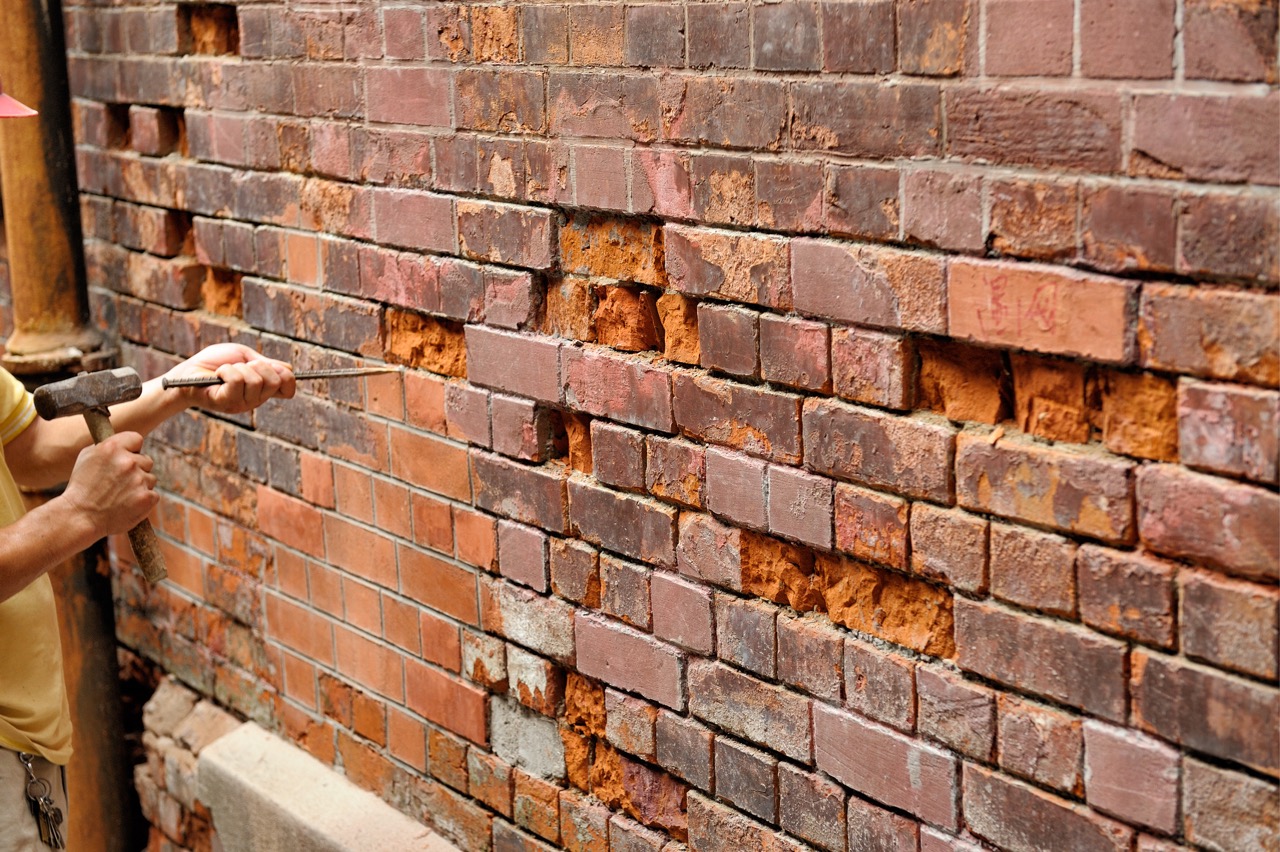Dependable Tuckpointing Services for Improving Block and Rock Surfaces
Dependable Tuckpointing Services for Improving Block and Rock Surfaces
Blog Article
Unlocking the Keys of Sustainable Stonework Building Practices for Eco-Friendly Buildings
In the realm of modern-day building, the quest of lasting techniques has come to be critical. Among the myriad methods to green building, sustainable masonry building stands apart as a time-tested and durable approach that holds a wide range of untapped capacity. From the option of products to ingenious building and construction strategies, the secrets to accomplishing sustainability within stonework building are multifaceted and fascinating. By checking out the benefits, materials, techniques, and future fads of lasting masonry, a deeper understanding of how these practices can shape the future of eco-friendly structures emerges.
Benefits of Lasting Stonework Building
Welcoming lasting stonework building and construction methods not just lowers ecological influence but likewise supplies long-lasting financial advantages to contractors and areas. By utilizing products like recycled blocks, blocks, and stones, builders can dramatically lower the carbon footprint of their projects while advertising resource effectiveness. In addition, lasting stonework construction techniques, such as appropriate insulation and thermal mass properties, can improve power effectiveness within buildings, leading to reduced functional prices with time.
Furthermore, the sturdiness and resilience of stonework structures add to long-term financial advantages. Buildings built making use of sustainable stonework techniques usually call for much less repair and maintenance, equating to cost savings for contractors and homeowner. The durability of masonry materials additionally makes certain that structures remain secure and safe and secure, decreasing the demand for regular renovations or replacements.
Eco-Friendly Stonework Materials
Using environment-friendly stonework materials is a critical step in the direction of enhancing the sustainability of construction methods and reducing ecological influence while making the most of long-term economic benefits. Sustainable stonework materials are sourced, created, and made use of in a fashion that decreases total ecological influence. Materials such as recycled blocks, recovered rock, and sustainable concrete blocks are becoming progressively prominent options for eco-conscious building contractors. Recycled blocks, for instance, not just divert waste from land fills but also need much less power to generate compared to new bricks. Redeemed rock uses an unique aesthetic appeal while minimizing the need for brand-new quarrying. Sustainable concrete obstructs integrate recycled accumulations and may include enhanced insulation residential properties, adding to power performance in structures.
Furthermore, all-natural materials like adobe, rammed planet, and straw bundles provide exceptional thermal mass buildings, reducing the need for home heating and cooling down power. These products are often locally offered, advertising local economic climates and lowering transportation-related carbon emissions. By choosing green masonry materials, construction jobs can significantly reduce their environmental footprint and add to the creation of healthier, more lasting built atmospheres.
Energy-Efficient Stonework Methods
Energy effectiveness plays a crucial role in enhancing the sustainability of stonework construction practices. By implementing energy-efficient masonry techniques, building contractors can significantly reduce the total energy usage of a building, causing lower operational expenses and a smaller ecological footprint. One essential energy-efficient masonry strategy is the use of thermal mass, which involves including thick products like concrete or brick right into the structure's structure to soak up and keep heat. This aids control interior temperatures, minimizing the requirement for mechanical home heating and cooling down systems.

Innovations in Lasting Masonry
Current advancements in sustainable stonework practices have produced cutting-edge strategies that are reshaping the building industry. One such advancement is the development of self-healing concrete, which utilizes microorganisms embedded within the concrete to heal splits autonomously. This advancement not just minimizes maintenance costs yet additionally improves the resilience of masonry frameworks, adding to their sustainability.
An additional noteworthy advancement is using recycled aggregates in masonry building and construction - masonry contractor. By integrating materials such as crushed ceramic waste or recycled glass right into concrete mixes, building contractors can reduce the environmental influence of construction find more information tasks while preserving structural integrity. This method not only diverts waste from garbage dumps yet also conserves natural resources, making it a crucial development in lasting masonry building
In addition, the assimilation of electronic style devices, such as Building Information Modeling (BIM), is changing the means masonry frameworks are intended and constructed. BIM enables for even more accurate estimations, minimized material wastefulness, and enhanced power performance, eventually bring about even more sustainable structure methods. These advancements collectively symbolize an appealing future for sustainable masonry building and construction in the era of environment-friendly structures.
Future Trends in Stonework Sustainability
With the ingenious strides made in sustainable stonework methods, the future fads in stonework sustainability are positioned to additional revolutionize the building market. One of the vital patterns forming the future of stonework sustainability is the boosted combination of technology. Innovations such as Structure Details Modeling (BIM) and digital truth simulations are being made use of to optimize stonework construction processes, leading to decreased product waste and boosted power performance in buildings.
Moreover, the advancement of unique sustainable materials is set to play a substantial role in improving the eco-friendliness of masonry building. masonry contractor. Technologies like self-healing concrete, recycled aggregates, and bio-based binders are acquiring grip for their capability to minimize environmental impact while preserving architectural stability

Verdict
In verdict, sustainable stonework building practices provide countless benefits for green buildings. By utilizing environment-friendly products and energy-efficient methods, read review stonework can add to a much more lasting developed environment. Advancements in sustainable stonework are continually being established to further enhance the environmental efficiency of structures. Looking towards the future, the trend of masonry sustainability is anticipated to grow, resulting in even more eco-friendly and energy-efficient building techniques in the years ahead.
Report this page